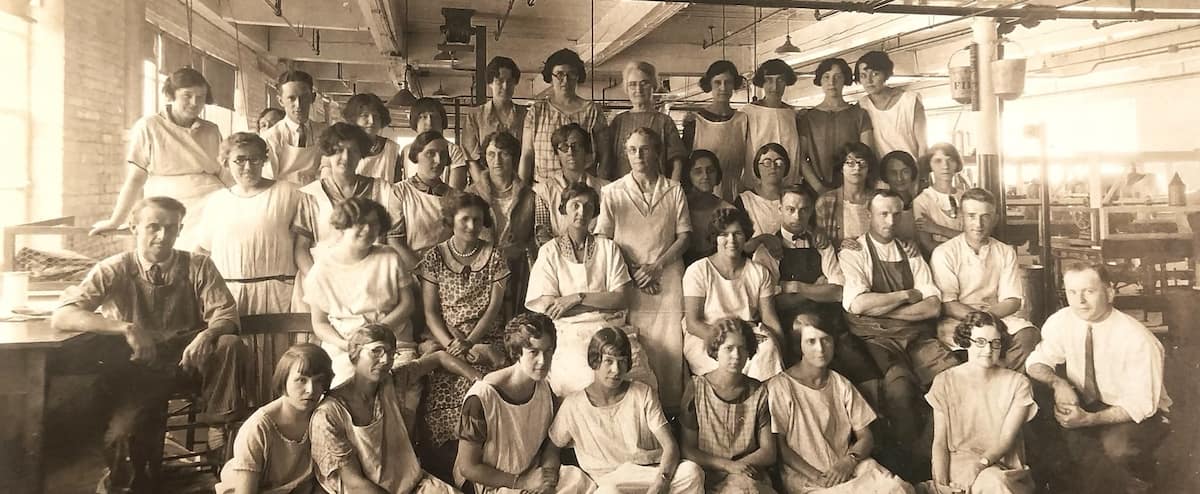Brian LeCompte was very moved to see his hometown in Maine, Lewiston, make international headlines following the October 27 shooting that left 18 people dead and 13 injured—the 10e worst mass shooting in US history.
“It shocked me to see neighborhoods that I know well be the scene of such a terrible tragedy,” he confided to Newspaper a few days after the events.
Until the age of 19, this linguist trained at Laval University lived in this city of 70,000 inhabitants where his parents, Robert LeCompte and Dorothée Lapointe, met in 1956 and raised their two children there.
Brian effortlessly evokes the parishes of Sainte-Famille, Saint-Joseph, Sainte-Marie which are juxtaposed in Lewiston. “And of course we ate pie and beans at Christmas!” he says when asked about family traditions.
The marriage of Dorothée Lapointe and Robert LeCompte on April 21, 1956.
Courtesy Brian LeCompte
Little Canada
In Lewiston, as in several New England towns (Manchester, Lowell, Holyoke, New Bedford, Lawrence, Woonsocket, etc.), there are neighborhoods made up mainly of descendants of French Canadians who “left for the States” at the turn of the 19th.e and 20e century.
We call “Little Canada” these neighborhoods with the church, the general store and the small businesses that look like they were copied and pasted from Shawinigan or Trois-Pistoles.
- Listen to the interview with Karl Blackburn, president of the Conseil du patronat du Québec (CPQ), on Yasmine Abdelfadel’s show via QUB radio :
There were at a certain time in these towns, according to the historian Yves Roby, as many if not more French speakers than in “most medium-sized towns in Quebec”, as he writes in The Franco-Americans of New England (Northern, 2000).
The historian who died in 2019, who devoted 30 years of his career to the study of this particular population, estimates the number of people who went to try their luck in the United States between 1840 and 1930 at 900,000; two-thirds concentrated in New England, forming ghettos with their language and religion.

St. Peter’s Basilica in Lewiston-Auburn is one of several Catholic churches in the city merged with Auburn in recent years.
Courtesy Brian LeCompte
Factories and manufactures
It was to escape the endemic unemployment of the St. Lawrence plain that young men sold their possessions to head south where they would have better chances of securing their future in 1830.
Times were so difficult in Canada that emigration became a “survival strategy” according to historian Roby. There was no shortage of work in the textile factories and factories of the northern United States.
“It is certain that these immigrants constituted the cheap labor of the time,” continues Rémi Francoeur, also a Franco-American who returned to the land of his ancestors a few years ago.

Shoe factory in Leviston, Maine, circa 1918. Brian LeCompte’s grandmother, Imelda Montreuil, and his sister Marie-Anne are in the group.
Courtesy Brian LeCompte

The Lewiston Grand Trunk station where tens of thousands of Quebecers arrived at the turn of the century.
Courtesy Brian LeCompte

The largest factory in Lewiston, “Bates”, which produced Victorian-style bedspreads.
Courtesy Brian LeCompte
Although most wandering Canadians of this era eventually integrated into the Melting pot American, Little Canada generally remains modest neighborhoods until the 21ste century. The great American dream has not benefited everyone.
What remains of this wave of immigration to New England? Several buildings, including churches, which bear witness to the faith that the population carried with them. And surnames from our region as traces of their origins.
As historian Jean Provencher mentions, some tried to remove this imprint, which shocked the newspaper The gallery in 1896. The journalist urged Franco-Americans to stop translating their last names into English. The Archambaults became Shamboo there; Bélanger, Baker; Boivin, Drinkwine; Jolicoeur, Fineheart; Small, Small; Roy, King; Leblanc, White… And what about Simard who became… SixDead?
